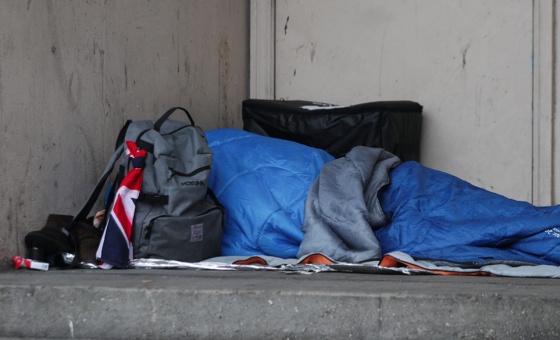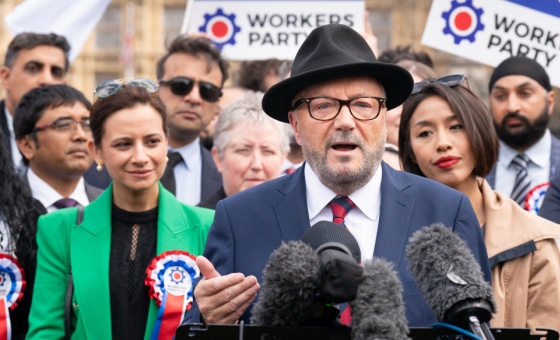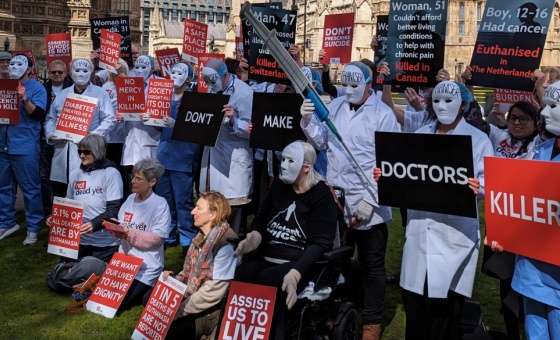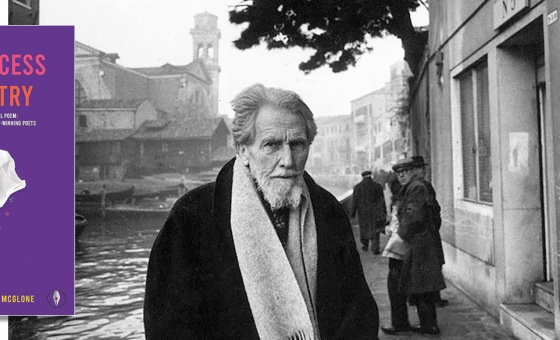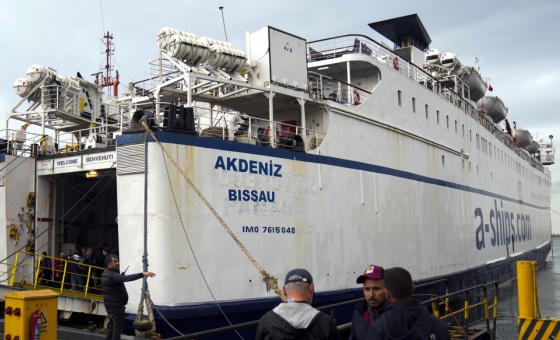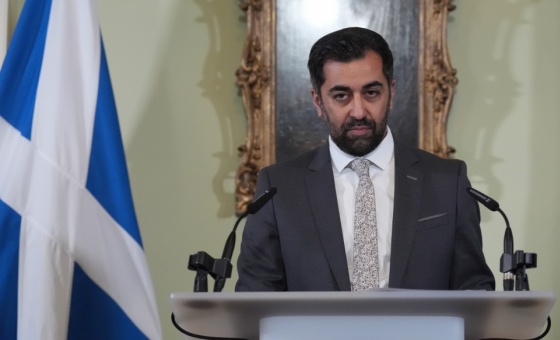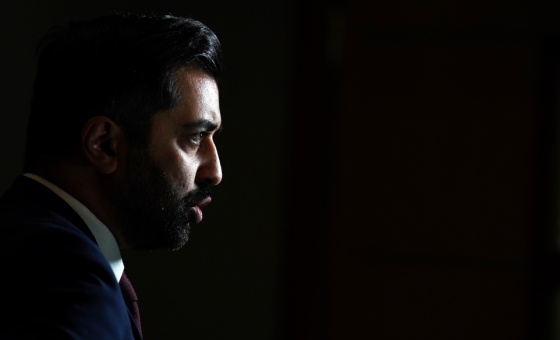This is the last article you can read this month
You can read more article this month
You can read more articles this month
Sorry your limit is up for this month
Reset on:
Please help support the Morning Star by subscribing here
DURING the struggle to win votes for women in Britain in the first couple of decades of the 20th century, Suffragettes became masters of the art of gaining media attention with elaborate and imaginative actions.
One of the most audacious examples of this was an airship flown over London on this day in 1909 by Muriel Matters. Matters was a master in imaginative publicity for her cause.
She was born in Australia, coming to Britain in 1905, aged 28. She was a professional pianist, elocutionist and actress before coming to England, where she also became a talented journalist.
Matters became involved with the Suffragette movement and was a leading member of the Women’s Freedom League (WFL), a split from the better known Women’s Social and Political Union (WSPU).
The WFL had been established in 1907 when Matters and some other leading members of the WSPU began to question the leadership of Emmeline and Christabel Pankhurst.
The Pankhursts became unpopular with some Suffragettes by making decisions without consulting members and they challenged those who did not accept their leadership to leave the WSPU and to form an organisation of their own.
Seventy leading members left to form the WFL. Like the WSPU, the WFL was a militant organisation that was willing the break the law.
Members of the WFL however were generally non-violent and disagreed with the WSPU campaign of vandalism and arson against private and commercial property. Despite this over 100 WFL members were still sent to prison.
The WFL soon had over 4,000 members and it had its own newspaper, The Vote.
Matters was in charge of another publicity first — a horse-drawn recruiting caravan that toured the country.
Most WFL members were pacifists and during World War I they refused to become involved in the British army’s recruitment drive or to call off the votes for women campaign while the war was on.
WFL members supported the Women’s Peace Crusade for a negotiated peace.
Matters first came to prominence by chaining herself to a grille in the Ladies’ Gallery of the House of Commons.
While the authorities sent for a blacksmith to cut her free she made a speech. It was almost certainly the first speech ever made by a woman in the House of Commons.
When she learned that King Edward VII was to lead a public procession to officially open Parliament on February 16 1909 she knew this was an occasion not to be missed.
What was needed was something that would seize the headlines for the female emancipation.
Matters was not only a Suffragette, she was also a great socialist and counted among her circle of left-wing friends people such as Sylvia Pankhurst, George Bernard Shaw and the Russian anarchist Peter Kropotkin.
Another socialist friend and a keen supporter of the Suffragette cause was Henry Spencer. It was not, however, Spencer’s politics that caught her attention. It was his most unusual hobby.
Spencer had built his own airship and flew the 80-foot hydrogen-filled dirigible from a small field near the Welsh Harp Lake in Hendon, north of London.
The lake is still there, beside the North Circular road, and the flying field became Hendon aerodrome and is now the RAF Museum.
Matters explained her plan to the bold aeronaut. They would load his airship, suitably painted with suffrage slogans, with a hundredweight of pamphlets and rain them down over the king’s procession.
I’ll let Matters take up the story as she did in a 1939 interview with the BBC.
“That morning I went to Hendon and met Mr Henry Spencer who had his airship all ready near the Welsh Harp.
“It was quite a little airship, 88 feet long, and written in large letters on the gas bag were three words: Votes for women.
“Below this was suspended an extremely fragile rigging carrying the engine and a basket, like those used for balloons.
“We loaded up about a hundredweight of leaflets, then I climbed into the basket. Mr Spencer joined me and we rose into the air.”
The airship, despite the weight of two people and all that propaganda, climbed to an altitude of 3,500 feet before levelling off.
“It was very cold,” Matters said, “but I got some exercise throwing the leaflets overboard.”
She went on to describe how Spencer would climb out of the basket and clamber like a spider across the framework to make adjustments to the engine.
“Suddenly I realised that if he fell off, I hadn’t the first idea how to manoeuvre the airship.” she said.
“Not that I was terribly bothered about that. I was too busy making a trail of leaflets across London.”
With the airship emblazoned with “Votes for Women” on one side and “Women’s Freedom League” on the other she scattered 56lb of handbills onto the streets and houses below.
Edith How-Martyn and Elsie Craig, two leading members of the Women’s Freedom League, followed the airship in a car.
Unfortunately, the elements conspired against the Suffragette cause. The airship’s feeble motor was not enough to overcome the strong winds that blew it off course.
The airship never made it to the Palace of Westminster but drifted across London, passing over Wormwood Scrubs, Kensington, Tooting and eventually crash-landing — after a trip lasting an hour-and-a-half — in the upper branches of a tree in Coulsdon, Surrey.
Despite failing to fly over the king and his procession, Matters considered the aerial adventure a great success.
“The flight achieved all we wanted,” she said. “It got our movement a great deal of publicity, as you can imagine. In those days, the sight of an airship was enough to make people run for miles.”
Certainly the unique flight made headlines all across Britain and the world.
After her aerial adventure, Matters continued with her political life as an active Suffragette lecturing all over the world. She was an active campaigner against the first world war and stood as the Labour Party candidate for Hastings in the general election of 1924.
She went on to study in Barcelona under Maria Montessori, the radical Italian educationalist, returning to work at Sylvia Pankhurst’s school in Bow, east London.
Matters, the Suffragette in the airship, died in 1969 aged 92.
You can hear Muriel Matters telling her own story in her 1939 BBC radio interview www.bbc.co.uk/archive/suffragettes/8315.shtml

